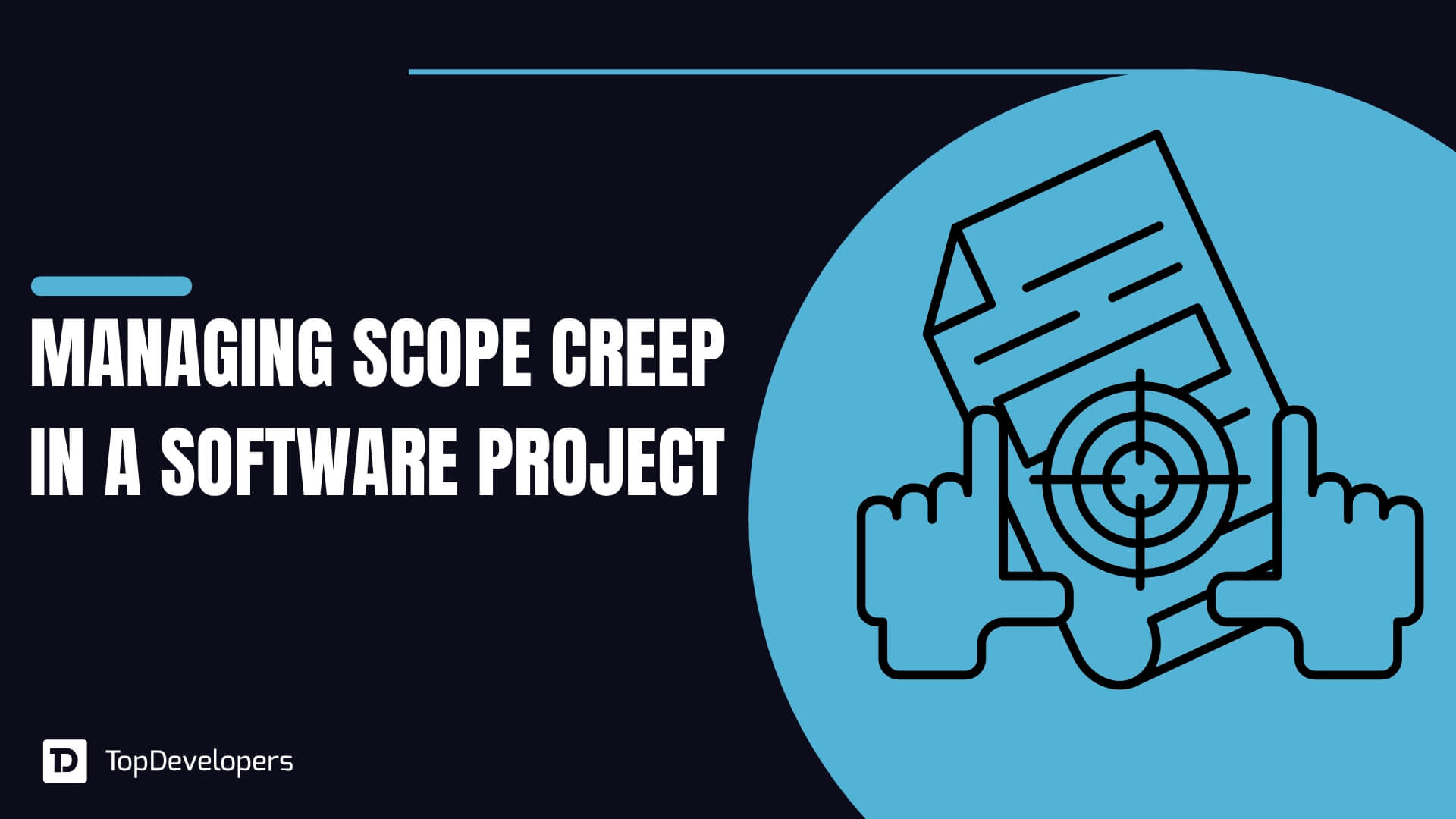
A well-functioning team of adequate people will complete a project almost regardless of the process or technology they are asked to use (although the process and technology may help or hinder them along the way.).
It determines the importance of a professional software development team for businesses looking to build a software project. Success is achieved with the software development team only when the optimal number and type of specialists are part of the software engineering team. No individual can handle the software development individually, regardless of the project size.
Ensuring the software development team brings winning outcomes and setting up a team structure with different specialists having specific roles and responsibilities are essential. It’s not the work of an average person but requires executing things strategically. Let’s walk you through the importance of setting up the right software development team, how to set up them with different roles and responsibilities, and the factors that impact the overall team structure.
Table of Contents
- What Is a Software Development Team?
- What Are the Roles and Responsibilities of Software Development Team Members?
- Why Is Having the Right Software Development Team Structure Important?
- What Factors Affect Software Development Team Structure Creation?
- Build the Best Software Development Team
- FAQ About Software Development Team
What Is a Software Development Team?
The software development team is a group of people who work together with dedicated tech experts, including developers, designers, testers, project managers, analysts, marketers, and others who work collaboratively to build software. Every member of the software development team is assigned specific tasks based on their roles in software product development and is accountable for completing the work before the deadline.
Also, they are self-organized and cross-functional and continuously communicate, ensuring shared responsibilities are completed within time. The roles and responsibilities are defined in the team according to the experience level and skill set so that the project progresses hassle-free and quality is maintained.
What Are the Roles and Responsibilities of Software Development Team Members?
Software engineering teams are known for building quality software with a cleaner codebase, leveraging their expertise and experience. However, a software development team performs to the top when their roles and responsibilities are determined in the software development organizational structure. The roles and responsibilities of the software engineering team structure look like this-
Product owner
Product owners take care of product success rather than consider it part of business. They are responsible for handling small teams that work together and communicate with business clients, ensuring the project is steering in the right direction. The product owner is a single point of contact who makes all the software product decisions in the software development group.
Critical responsibilities of product owner
- Ensure seamless communication between the software team and business clients.
- Keep the software team and business client informed about updates, issues, and work priorities.
- Take business project scope-related decisions.
- Document software project requirements.
- Create, maintain, and update software product backlog.
- Make efforts to maximize ROI with software development.
Project manager
A project manager manages and controls the software development team and helps the team finish the project before the deadline and within the given budget, irrespective of hurdles and other issues. With a software project plan, development strategy and milestones are created, ensuring project goals are achieved. They also directly communicate with business stakeholders to align the team with software project requirements.
Responsibilities of project manager
- Create a project plan and define functional specifications.
- Determine and manage resource allocation for software development.
- Continuously track the project development and make adjustments to the plan when required.
- Consistently report updates to management and project/product owners.
Business analyst
Before the software project is rolled out on the development floor, business analysts link the business and technical sides of the project by working with the product owner and technical lead. Their job is to translate business software requirements from a technical point of view and document them based on their research. The document created after proper requirement analysis serves as a base for the team’s final development.
Responsibilities of business analysts
- Research, analyze, and maintain up-to-date software requirements with precise functional specifications.
- Make suggestions for project improvements and prioritize features for the best results.
- Keep the software owner, technical lead, and development team on the same page, clarifying what needs to be built.
- Recommend specific project methodology and ensure quality development.
Team lead
The team lead role is assigned to the development team’s senior developers, designers, or testers based on their leadership and management skills. They are responsible for guiding the team, providing the resources required, and ensuring team members of software development projects accomplish their tasks with great focus.
Responsibilities of team lead
- Coach and mentor the team from a technical point of view.
- Define coding standards and procedures for glitch-free development.
- Keep the team motivated for successful software development.
- Liable to solve development-related issues if they arise.
Software developers
Software developers are programmers with the necessary knowledge and experience in writing codes and creating logic. There are different types of developers- full-stack, front-end, and back-end developers who work with designer, tester, and QA teams. Software developers and engineers send updates to the project manager for completion or issues with assigned tasks.
Responsibilities of software developers
- Build the functionalities as defined under the task allocation.
- Send work completion updates to the higher-ups regularly.
- Complete the tasks within the stipulated time.
UX designer
UI/UX design is vital in engaging users for the longer run and turning them into potential customers. The role of UI/UX designers is to design an interface leveraging their knowledge and experience that intrigues the users. Designers should optimally understand the software project requirements and target audience before heading onto the design phase of the SDLC process. Under the design umbrella, navigation structure, interaction sequence, app flow, graphics style, and visual arrangement of content are covered.
Responsibilities of UI/UX designer
- Identify and analyze the functional requirements of the business project.
- Create data architecture and navigation structure.
- Build prototypes for visual design validation.
- Document interface design-related information and decisions.
- Implement software interfaces for web and desktop.
Software architect
Software architecture serves as the base for the entire software design. The software architect’s job is to define software architecture wherein high-level designs are created, and coding standards are defined based on non-functional requirements.
Responsibilities of software architect
- Determine technical and functional architecture.
- Build critical software components.
- Help developers with software design and implementation.
- Recommend the best alternatives for technical and business aspects.
Quality analysts
Quality assurance professionals also known as Quality analysts play the role of checking software quality during the software development life cycle. QA members have rich experience in software development and ensure the right practices are followed while the software is under development.
Responsibilities of quality assurance
- Check documents for standards and procedures and identify deviations.
- Analyze implementation as per the defined software criteria.
- Provide feedback for the corrective actions to be taken.
Software testers
Testers are known for testing software for bugs, defects, or weaknesses in the project during software development, ensuring the result is flawless. Thereby, businesses are assured that quality standards are met and compliant with regulations as needed.
Responsibilities of testers
- Find out software requirements to create test cases for STLC.
- Leverage the right mix of manual and automation testing tools for software testing.
- Create and execute test cases to identify and report bugs.
- Identify functional inconsistencies and inform the team of the same.
Why Is Having the Right Software Development Team Structure Important?
The software development team is responsible for completing the software development project and adding value to the project. However, expected results are driven by software engineering teams when the balance between roles and responsibilities is struck.
For example, eliminating the role of the project manager in the development team could create a disaster for software. The unmanaged team cannot work to its peak efficiency, improper resource allocation won’t allow the team to work in tandem, and no control over the team makes it impossible to complete the project on time. Similarly, every software development team member is essential to achieve project success.
Sometimes, businesses are mistaken not to hire senior developers to save development costs, but it proves to be fatal at a later stage. Here, ensuring the right mix of senior developers and new entrants with less experience helps get a team that shapes ideas into a reality within time and budget.
Dedicated Software Development Team: The Key to Business Success
What Factors Affect Software Development Team Structure Creation?
Building a software development team in a way that meets software objectives is essential to bring expected outcomes. Considering a few factors enables building the right team businesses need for software product development.
Project complexity
Depending on your software type and complexity, whether that’s a prototype or full-fledged solution development, the number of team members is hired in the team accordingly. For example, a new software development with advanced features and third-party integrations requires 10-15 team members, including product owners, business analysts, project managers, developers, designers, QA & tester, and more.
Project timeline
The reduced turnaround time for the projects requires a large number of experts in the software development team to ensure the project gets completed within time. So, ensure assembling a software team structure of extended developers, designers, testers, and others that deliver quality solutions quickly and easily.
Software development cost
A limited budget restricts hiring senior software developers and technology specialists in software development, which may compromise quality. It can be prevented with agile methodology. The agile software development team structure fits well in such a scenario that helps to get software incrementally based on your finances.
Cost to develop custom software – A guide to calculate your budget
Software development approach
The selection of software development methodology directly influences the software development team structure. For example, the waterfall methodology involves a project manager and subordinates, each having pre-defined responsibilities. This hierarchical structure grants more control to the project manager. Conversely, agile methodology enables team members and project managers to prioritize their tasks and work effectively.
Domain expertise and experience
Software development is not only about writing code; the professionals must have domain expertise and experience working with similar projects. It ensures that the development team brings the best thing to the table.
Build the Best Software Development Team
Software projects fail for one of two reasons: the team needs to gain the knowledge to conduct a software project successfully, or the team needs the resolve to conduct a project effectively.
The quote indicates the importance of the software development team for modernized software development, which has never been realized before. It makes perfect sense to carefully build a software development team structure with a good balance of roles and responsibilities, which further helps accelerate development speed and enhance software productivity. Get the team structured in a synchronized way, ensuring quality results.
FAQ About Software Development Team
How do you build a software development team?
Software development team creation depends on the project’s type, size, timeline, budget, and complexity. For example, a project with tight deadlines, many features, and a high budget limit requires a large team of at least 10-15 members.
What are the roles of a typical software development team?
The roles in a software development team are product owner, project manager, business analyst, team lead, developers, designer, architect, QA, and testers.
Who leads a software development team?
The product owner and project manager control and lead the team. However, the project management methodology brings changes in leading roles.
What should I look for when building a software development team?
Before hiring a software development team, look for portfolios, industry knowledge, domain expertise, level of experience, team location, technical knowledge, communication skills, creative thinkers, and competitive development costs.
 Avantika Shergil
| Apr 9, 2024
Avantika Shergil
| Apr 9, 2024
Avantika Shergil is a technology enthusiast and thought leader with deep expertise in software development and web technologies. With over 8 years of experience analyzing and evaluating cutting-edge digital solutions, Avantika has a knack for demystifying complex tech trends. Her insights into modern programming frameworks, system architecture, and web innovation have empowered businesses to make informed decisions in the ever-evolving tech landscape. Avantika is passionate about bridging the gap between technology and business strategy, helping businesses build customized software and website, and understand about different tools to leverage effectively for their ventures. Explore her work for a unique perspective on the future of digital innovation.





